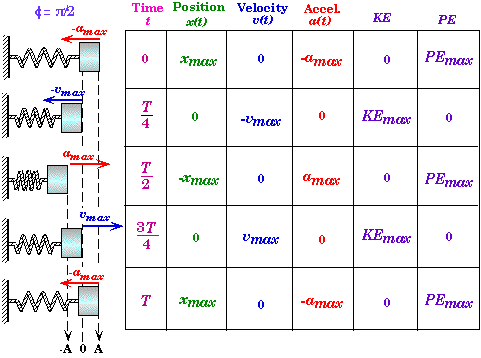|
The energy in a simple harmonic oscillator is stored in one of two ways, or a combination of the two.
Kinetic Energy (U): the energy involved in motion
Potential Energy (K): stored energy that can lead to motion
Equations for energy:
U = kx^2
K= 1/2 mv^2
The energy in a spring is shown in the following table:

|
| http://www.ac.wwu.edu/~vawter/PhysicsNet/Topics/SHM/MassOnSpring.html |
When the spring is as its maximum and minimum displacement from equilibium, all the energy has been converted to
potential.
When the spring is passing through its equilibrium point, all the energy is kinetic.
At A(max/min):
U = E(total)
K = 0
At equilibrium:
U=0
K=E(total)
E(total) is always the sum of the
potential and kinetic energy!
More about springs!
Or go straight to the practice problems
|

